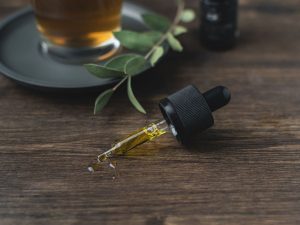Since the release of the Flintstones vitamins in the 1960s, gummies have been in a curious grey area between healthy food & candy. In time, the dietary supplement capsule became the norm because people who grew up using them wanted to continue the practice. Click Here for more info.
Gummy candies infused with cannabidiol (CBD) followed the wave of other CBD edibles that hit the market in recent years.

This article is meant to be a comprehensive resource for all things related to hemp candy. Here, you’ll find an explanation of CBD gummies, a look at their manufacturing process, and recommendations on the best use of this product.
What Does One Understand By CBD gummies?
Cannabidiol (CBD) gummies are tasty, chewy candies that contain CBD. Cannabidiol (CBD) is derived from the hemp plant, cannabis that does not produces intoxication. It is only one of several cannabinoids that are naturally occurring chemicals in cannabis that do interact with the human neurological system and produce favorable effects in most cases—that it contains.
Gummies infused with CBD may either employ CBD isolate, which contains CBD, which contains several additional cannabinoids and minerals.
However, pulling up THC, the cannabinoid responsible for the high, is a common side effect of full-spectrum extraction. THC levels in hemp, limited to 0.3% by weight under federal law, may be high enough to provide a positive result in a drug test.
CBD Gummies: Similar to Hemp Gummies?
The answer is probably yes, although that is brand dependent. The CBD’s legal position needs to be clarified, not the reason for the varying phrasing.
Under the terms of the 2018 Farm Bill, CBD derived from hemp rather than marijuana is now legal in the United States. However, the FDA has spoken out against CBD edibles, citing regulations that prevent mixing pharmaceuticals with food for its disapproval.
Since the FDA lacks a police force, some state and local governments have ignored this by adopting laws to the contrary or simply not enforcing the requirement. However, because of the uncertainty, many stores still won’t stock “CBD” ingestible items with such labeling. Because hemp is utilized in producing CBD-infused gummies, rebranding them as “hemp gummies” is technically accurate but might help them get distribution in stores that would otherwise be reluctant to carry them due to the “CBD” label.
What is the Process for Producing CBD Gummies?
Once CBD has been extracted, it forms a crystal that may be dissolved in a liquid or food. Some manufacturers include CBD in their products by heating the mixture. However, CBD incorporates its pure CBD isolate during the melting phase.
What exactly are these components?
The unique chewiness of gummies is a result of pectin. Pectin is a naturally occurring substance found in the cell walls of fruits. It is responsible for gelling during the conventional method of heating fruit mash with sugar water. This process is done in isolation to produce items with an even firmer consistency, such as jellybeans and gummies.
Sweeteners, oils, and flavorings round out the formula and might differ according to the producer. Organic tapioca syrup, cane sugar, fruit juice, and sunflower oil are all components of CBD gummies. Orange, strawberry, mixed berry, and tropical are just some of the natural and artificial flavors that may be found in each container of gummies right now.
The citric acid, found naturally in lemons, and malic acid, found in sour apples, are two examples of acids that may enhance a dish’s sourness. CBD is added to the melt, and the resultant gelatinous mixture is extruded, shaped (into cubes), and coated.

Conclusion
Gummies containing cannabidiol (CBD) are a delicious candy option. Hemp, a kind of cannabis that does not cause intoxication, is the source of CBD. Cannabis includes several cannabinoids, naturally occurring compounds that interact with the human nervous system and cause desirable effects in most circumstances.
